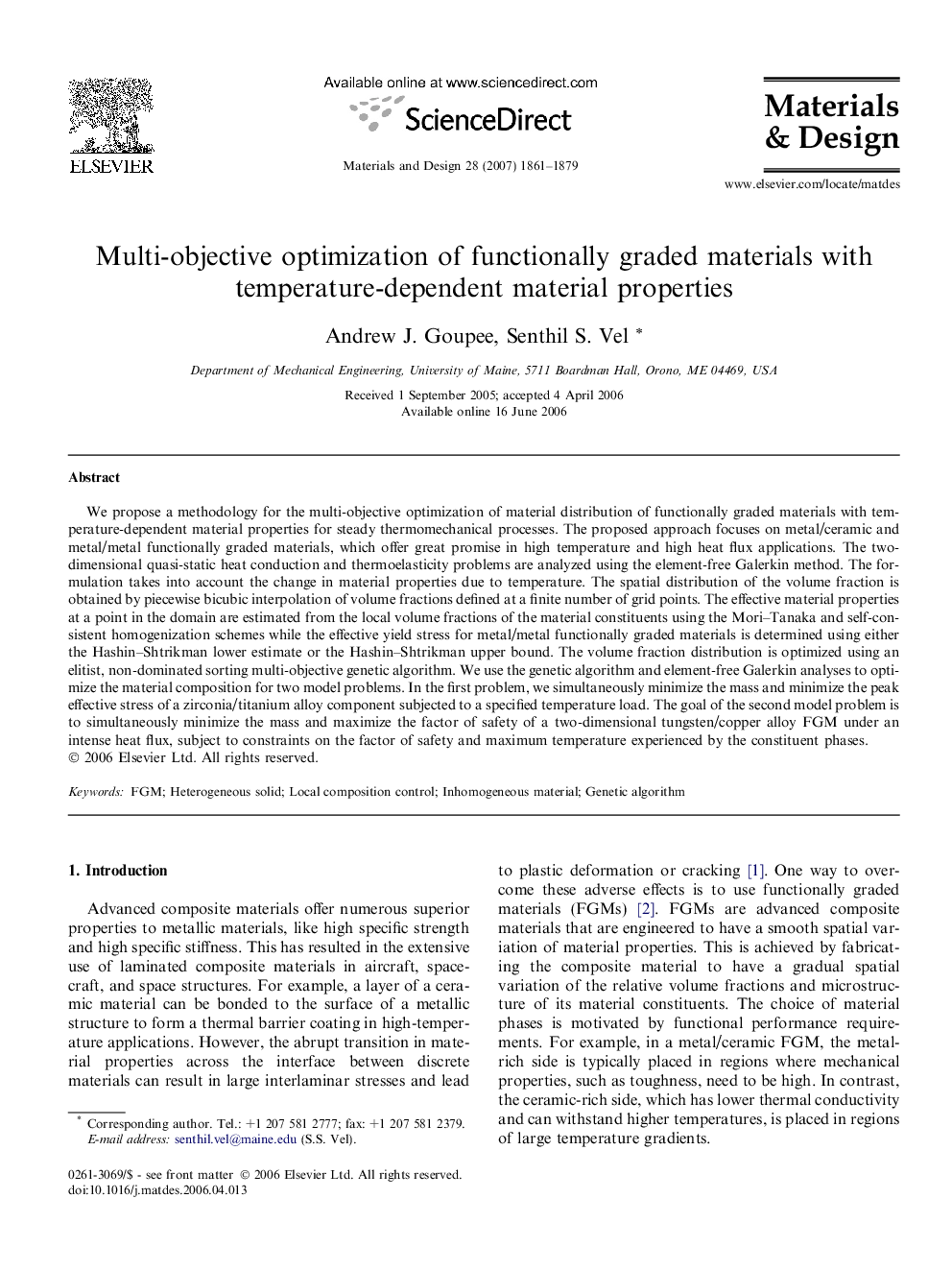| Article ID | Journal | Published Year | Pages | File Type |
|---|---|---|---|---|
| 833626 | Materials & Design (1980-2015) | 2007 | 19 Pages |
We propose a methodology for the multi-objective optimization of material distribution of functionally graded materials with temperature-dependent material properties for steady thermomechanical processes. The proposed approach focuses on metal/ceramic and metal/metal functionally graded materials, which offer great promise in high temperature and high heat flux applications. The two-dimensional quasi-static heat conduction and thermoelasticity problems are analyzed using the element-free Galerkin method. The formulation takes into account the change in material properties due to temperature. The spatial distribution of the volume fraction is obtained by piecewise bicubic interpolation of volume fractions defined at a finite number of grid points. The effective material properties at a point in the domain are estimated from the local volume fractions of the material constituents using the Mori–Tanaka and self-consistent homogenization schemes while the effective yield stress for metal/metal functionally graded materials is determined using either the Hashin–Shtrikman lower estimate or the Hashin–Shtrikman upper bound. The volume fraction distribution is optimized using an elitist, non-dominated sorting multi-objective genetic algorithm. We use the genetic algorithm and element-free Galerkin analyses to optimize the material composition for two model problems. In the first problem, we simultaneously minimize the mass and minimize the peak effective stress of a zirconia/titanium alloy component subjected to a specified temperature load. The goal of the second model problem is to simultaneously minimize the mass and maximize the factor of safety of a two-dimensional tungsten/copper alloy FGM under an intense heat flux, subject to constraints on the factor of safety and maximum temperature experienced by the constituent phases.
